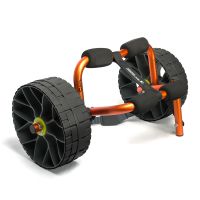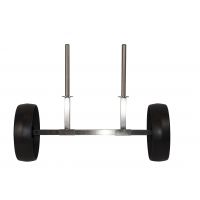Cart is empty
Hatches
There are many features and options that the designer can choose to include or omit with the overall decision being dependent on the end benefit or performance that he/she would like the boat to have or do.
The different features to consider when looking to purchase a canoe, kayak, sea kayak or sit-on-top can be found under each heading.
- Hull Shape
- Seats
- Steering Systems
- Rudders
- Hatches - see below
FEATURES EXPLAINED - HATCHES
Hatches allow you to access storage compartments within your kayak, where you can take food, drink and sunscreen for a day trip, or tent, sleeping bag and clothing for over-night expeditions.
Whilst some storage areas can be quite dry, none are absolutely guaranteed to be water tight. It is strongly recommended that you put your belongings into dry bags, firstly to keep them dry and secondly to prevent your things spreading out inside your kayak.
There are a number of different types of hatches which offer different results. The types of hatches include:
- Rubber push-on hatches
- Hard covers over neoprene
- Screw hatches
- Hatches with quarter-turn locks
Read on below to find out more about the different types of hatches.
Rubber Push-on Hatches
Australis use all rubber "push-on" hatches, as we have found that they are more practical and user friendly than the alternatives.
Australis use "push-on" hatches because:
- they are easy to get on and off;
- they give the most effective seal of all the different hatch types;
Australis "push-on" hatches give a great seal because:
- The lip that the hatch secures to is quite substantial, giving a large surface area for the hatch to grip onto.
- the profile that the hatch attaches to is moulded into the kayak, eliminating the need to drill extra holes to secure a profile (and creating potential leak points);
- Australis hatches are made from a material that is pliable and the flexibility allows for the absorption of wave impact and will adjust to affix to the profile.
- Australis hatches are made in a material that is UV resistant and that doesn't dry out and become brittle with age or prolonged exposure to the sun.
- Australis hatches will maintain their original shape, and do not curl up following exposure to the sun.
In our trials, we have found that a 100kg person can stand with one foot in the centre of our oval rubber hatch (used on the sea kayaks), and the hatch will remain firmly attached!
Some designers choose not to use push-on hatches because they think that they will "pop-off" under the pressure of a wave coming onto the top deck of the kayak.
This has been true of some the hatches on boats made by our competitors because:
- The lip that secures the hatch is not deep enough to give sufficient surface area for the hatch to grip onto.
- The material that the hatches are made out of is too stiff and this lack of flexibility fails to absorb the energy of the impact of waves.
- The material that the hatches are made out of buckles and curls and goes out of shape following prolonged exposure to the sun.
Hard Covers over Neoprene
The most commonly used hatch is a hard cover over neoprene.
The neoprene skin is the actual "seal",whilst the hard cover is needed to stop the waves pushing the neoprene cover into the hull when in rough conditions.
Australis do not use hard covers secured with buckles over neoprene because:
•Neoprene covers can be quite difficult to fit to the profile, especially for people with limited strength or with arthritic conditions.
- Neoprene covers "pucker" where they are stitched onto the bungy. Anywhere there is a pucker is a potential leak point.
- Hard covers only serve to stop the neoprene caving in if a wave comes over the top, and as such they do not actually give any watertight protection.
- Water can get in under hard covers and seep through the neoprene into the storage area.
The first plastic sea kayak that we made, the "Trilogy", had hard covers over neoprene, and we found that water would get in under the hard cover and then seep through the neoprene into the storage area.
As a result of this experience, all Australis hatches are now rubber "push-on".
Screw Hatches
Australis do not use "screw" hatches because:
- When sand gets into the thread, the hatch becomes difficult to get on and off;
- when screwing the hatch lid in, it can become crossed threaded and become hard to get on or off;
- you have to drill into the kayak to attach the profile that the lid screws into, making extra potential leak points;
- a hard plastic lid does not seal very well on a hard plastic profile and as such a soft "o-ring" is required. This is an extra part that you could loose and will need to replace;
- these types of hatches are generally quite small in diameter and don't allow you to put anything besides small items into the storage area.
"Screw" hatches are usually used by people who want a hatch that is cheap and easy to install.
Hatches with Quarter Turn Locks
Australis do not use "hatches with quarter turn locks" because:
- you have to drill into the kayak to attach the profile that the lid locks into, making extra potential leak points;
- most of these are quite heavy and add extra unnecessary weight to the kayak.
- these are a hard plastic against a hard plastic and require an "o-ring" for a good seal. This is an extra part that you could loose and will need to replace.
An advantage of this type of hatch is that they can be quite large and allow you to put large objects into your storage areas, and because they are made of a hard material are very strong when waves crash onto the kayak deck.
© 2013-2025 Australis Canoes. Powered by AVS Online Store

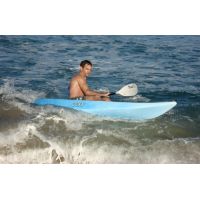
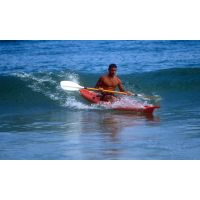
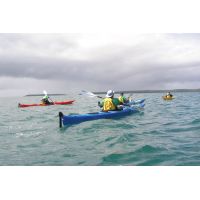
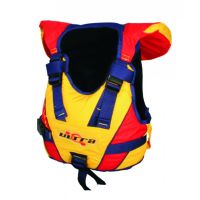
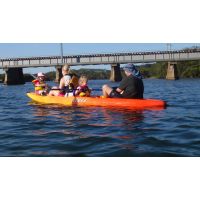
.jpg)
